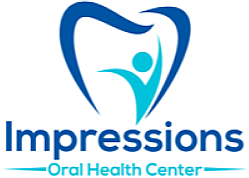Fear Not! Dental Anxiety is Common and Treatable
October 12th, 2012
 If you suffer from dental anxiety, a visit to our office might seem like a daunting prospect. Perhaps you had a bad experience in the past, but whatever the reason, please know that at our office, there is nothing to be afraid of. We understand you may be anxious about receiving dental treatments, and we’re here to help you have a comfortable, pain-free experience that will put your fears to rest.
If you suffer from dental anxiety, a visit to our office might seem like a daunting prospect. Perhaps you had a bad experience in the past, but whatever the reason, please know that at our office, there is nothing to be afraid of. We understand you may be anxious about receiving dental treatments, and we’re here to help you have a comfortable, pain-free experience that will put your fears to rest.
You’re not alone!
A 1984 study that appeared in the Journal of the American Dental Association reported that up to 75% of all adults in the United States have some degree of dental anxiety. This includes five to ten percent whose dental anxiety is so severe that they try to avoid a dentist’s office at all costs.
Treatment
If you experience dental anxiety, it is important to let our office know in advance, so we can provide you with the dental care you need with an added touch of TLC. We can assist by explaining behavioral techniques for relaxation, by administering nitrous oxide (laughing gas), or by prescribing a relaxing medication prior to your dental procedure.
Teeth Grinding: More Than a Bad Habit
October 5th, 2012
 Perhaps you don't even know you grind your teeth. Maybe a spouse or loved one woke you up in the middle of the night and made you aware of what was happening.
Perhaps you don't even know you grind your teeth. Maybe a spouse or loved one woke you up in the middle of the night and made you aware of what was happening.
For many people, teeth grinding is a habit and a mechanical reflex; when they’re awakened and informed they were grinding their teeth, they have no recollection of it at all. According to the American Dental Association, this is the nightly situation for roughly ten percent of Americans. From young children to the elderly, teeth grinding, known in the dental community as bruxism, is a serious concern.
Many people who grind their teeth in their sleep have no idea they're doing it. In fact, when they wake up in the morning they feel no jaw pain and their teeth are fine: if it hadn’t been for someone telling them about it, the teeth grinding would have gone unnoticed.
There are other people, however, who wake up with jaw pain, shoulder and neck pain, and headaches. Teeth grinding can cause a host of dental complications. From cracked teeth and receding gums to a misaligned jaw, teeth grinding is not something to take lightly.
Preventive measures are the key to combating bruxism, and our office can set you on the path to a healthy and safe night sleep.
The Reasons for Teeth Grinding
There are many reasons for teeth grinding. For some people, it’s a habit they acquired when they were a child and never grew out of. On the other hand, some research claims that the condition is related to stress, anxiety, or some other type of psychiatric issue.
Still other studies point to everything from poor muscle control or over-eating before bed to gastro-esophageal issues. However, the root cause of the teeth grinding is less important than identifying preventive measures against it.
Common solutions to teeth grinding include:
• Wearing a protective nightguard
• Stress management techniques
• Medications and muscle relaxers
When you make an appointment at our office, we will assess your situation and determine what the best course of action is. Teeth grinding is a dental concern that can cause serious health issues down the road, so be sure to take preventive measures today.
How much do you know about your toothbrush?
September 28th, 2012
 Taking care of your smile is nothing new! People have been brushing their teeth for thousands of years. In fact, the first “toothbrush” was created around 3000BC! Ancient civilizations used a thin twig with a frayed edge to rub against their teeth for cleaning.
Taking care of your smile is nothing new! People have been brushing their teeth for thousands of years. In fact, the first “toothbrush” was created around 3000BC! Ancient civilizations used a thin twig with a frayed edge to rub against their teeth for cleaning.
The first toothbrush with bristles – similar to today’s toothbrushes – was invented in 1498 in China. Brushes were made out of bone or bamboo with bristles made from the hairs on the back of a hog’s neck.
It wasn’t until 1938 that the first nylon bristle toothbrush was introduced and people quickly became aware of practicing good oral hygiene.
Here are some other interesting facts about your toothbrush (and toothpaste):
• Most people are said to use blue toothbrushes over any other color
• The first toothpaste was used in 500 BC in China and India
• On average, children smile about 400 times per day
• Your toothbrush should be replaced every two months
• The first known toothpaste was used in 1780, Crest was introduced in 1955 and Colgate in 1873
When is the Best Time to Floss?
September 21st, 2012
 We always encourage our patients to practice good oral hygiene between office visits! Part of that process includes flossing, which is the process of cleaning between the teeth to remove food and debris from the areas that are hard to reach with a toothbrush. When food is allowed to remain between the teeth, it provides a breeding ground for bacteria, which can cause periodontal disease!
We always encourage our patients to practice good oral hygiene between office visits! Part of that process includes flossing, which is the process of cleaning between the teeth to remove food and debris from the areas that are hard to reach with a toothbrush. When food is allowed to remain between the teeth, it provides a breeding ground for bacteria, which can cause periodontal disease!
Should You Floss Before or After Brushing?
According to recent clinical findings, you can floss either before or after brushing, according to your own preference. By flossing first, you can brush away dislodged food debris afterward. On the other hand, brushing first allows you to loosen plaque between the teeth, making it easier to floss more effectively.
Whichever you choose, the most important goal is to floss thoroughly. That means using a fresh strand of dental floss each day, and carefully pulling it back and forth between all of the teeth. Do not skip flossing because your teeth look or feel clean.
When to Floss
Unlike brushing, you need only floss between your teeth once per day. Although you may choose to do it in the morning or afternoon, many prefer to floss at night to prevent food and debris from remaining in the crevices of the teeth overnight. This could prevent the build-up of plaque too, which is a cause of tooth decay.
Help with Flossing
If you have questions about your flossing technique or what type of floss is best for your teeth, contact our office. The staff will be more than happy to assist you in perfecting your home hygiene regimen. In most cases, you can choose between interdental cleaning picks or flexible floss strands to perform your daily flossing routine.



